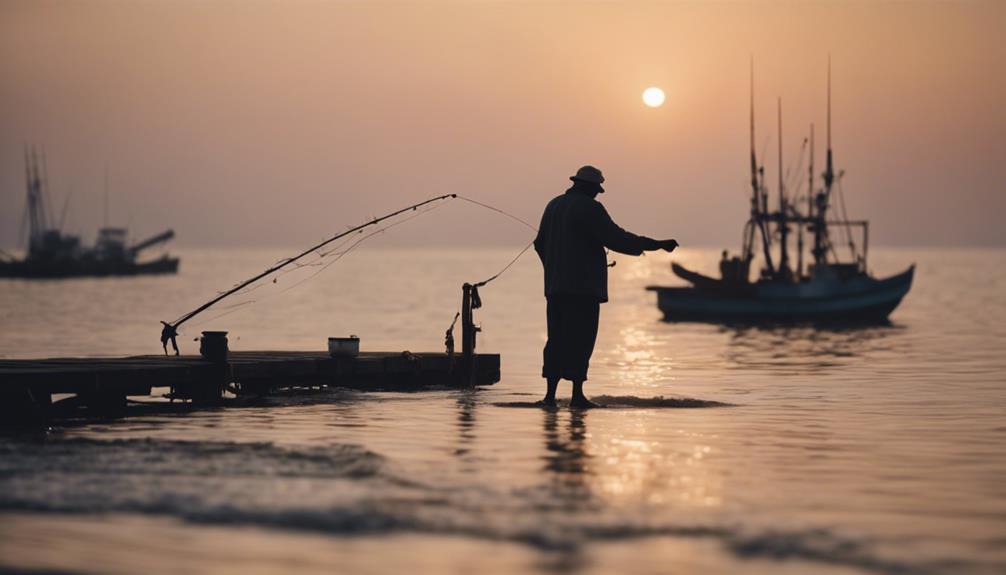Understanding PA Fly Fishing: A Brief Overview
PA fly fishing is a beloved pastime for anglers seeking the thrill of casting in Pennsylvania’s scenic rivers and streams. Known for its diverse aquatic ecosystems, Pennsylvania offers some of the best fly fishing opportunities in the United States. With an array of species, including trout, bass, and panfish, enthusiasts flock to its waters year-round. This guide will explore everything you need to know about PA fly fishing, from the best locations and techniques to gear recommendations and conservation efforts.
The Best Locations for PA Fly Fishing
When it comes to fly fishing in Pennsylvania, the options are plentiful. Some of the most popular spots include the Delaware River, the Little Lehigh River, and the Susquehanna River. The Delaware River, especially, is renowned for its wild trout population and stunning scenery. The Little Lehigh River, located in Allentown, is ideal for those seeking a more intimate fishing experience, while the Susquehanna River offers vast expanses of water and opportunities for larger fish species. Each of these locations provides unique challenges and rewards, making them must-visit destinations for any fly fishing enthusiast.
Understanding the Seasons: When to Fish in Pennsylvania
Timing is crucial when it comes to PA fly fishing. The best seasons to fish in Pennsylvania vary depending on the species you’re targeting. Spring is often considered the prime time for trout fishing, as the waters begin to warm and insects hatch, leading to increased fish activity. Summer brings opportunities for bass and panfish, while fall is another peak time for trout as they prepare for winter. Winter fishing, though challenging, can yield great rewards, especially for those targeting stocked trout in local streams. Knowing the seasonal patterns can significantly enhance your fishing experience.
Essential Gear and Equipment for PA Fly Fishing
To fully enjoy PA fly fishing, having the right gear is essential. A quality fly rod and reel, appropriate line, and a selection of flies are fundamental. Beginners may start with a 5-weight rod, which is versatile enough for various species and water conditions. It’s also important to invest in waders and boots to stay comfortable while navigating streams and rivers. A well-stocked fly box featuring nymphs, dry flies, and streamers can make a significant difference in your success on the water. Additionally, don’t forget essential accessories like tippet, leaders, and a net for landing fish.
Mastering Fly Fishing Techniques in Pennsylvania
To excel in PA fly fishing, understanding various techniques is vital. Casting, mending, and presentation are crucial skills every angler should master. Roll casts and double haul casts are particularly useful in tight spaces or windy conditions. Additionally, learning to read the water can help you identify where fish are likely to be hiding. Techniques such as dry fly fishing, nymphing, and streamer fishing each have their place, depending on the conditions and species targeted. Practicing these methods will not only improve your skills but also increase your chances of a successful catch.
Conservation Efforts and Regulations in PA Fly Fishing
Conservation is a critical aspect of PA fly fishing. Anglers must be aware of local regulations, including fishing seasons, size limits, and catch-and-release practices. Pennsylvania’s fish and wildlife agencies work tirelessly to maintain healthy ecosystems and ensure that future generations can enjoy the same fishing experiences. It’s essential to respect these regulations, practice ethical fishing, and participate in local conservation initiatives. By being responsible anglers, we can help preserve the natural beauty and fish populations of Pennsylvania for years to come.
Fly Fishing Communities and Resources in Pennsylvania
Connecting with other anglers can enhance your fly fishing experience in Pennsylvania. Numerous clubs and organizations, such as the Pennsylvania Fish and Boat Commission, provide valuable resources, including maps, guides, and information about local events. Online forums and social media groups also offer platforms for sharing tips, experiences, and advice. Engaging with the fly fishing community can lead to friendships, mentorships, and valuable insights that can elevate your skills and knowledge of PA fly fishing.
Conclusion: Embrace the Adventure of PA Fly Fishing
In conclusion, PA fly fishing is more than just a hobby; it’s an adventure that connects you with nature and offers countless opportunities for relaxation and challenge. Whether you’re a seasoned angler or a beginner, Pennsylvania’s diverse waters provide a rich tapestry of experiences waiting to be explored. By understanding the best locations, mastering essential techniques, and respecting conservation efforts, you can enhance your fly fishing journey in this beautiful state. So pack your gear, hit the water, and embrace the thrill of PA fly fishing!
